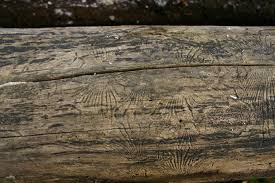Insect Blog

Elm Bark Beetle
May 14th, 2019
Plants Affected:
All elms.
Symptoms:
Insect exit holes the size of pinheads can be seen on the trunk and limbs of severely infested trees. The boring done by this insect is usually not harmful, but this insect often carries Dutch Elm Disease, which is usually fatal to American and English elms. Siberian and Chinese elms are resistant to the disease.
Life Cycle:
White, legless, 1/8” long grubs overwinter in the bark with emergence taking place in May. They fly to other trees to feed on young branches. During this time, they may transmit the Dutch Elm Disease fungus. After feeding, they seek out weakened or dead trees to bore inside to lay eggs.
Treatment/Care:
Controlling the beetle will control the primary source of spread of Dutch Elm Disease. Because of the severity and incidence of this disease, a preventive treatment while the tree is dormant is necessary every year. This will substantially reduce the possibility of the tree becoming infected with the disease, but will not guarantee total prevention.
